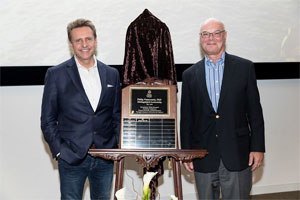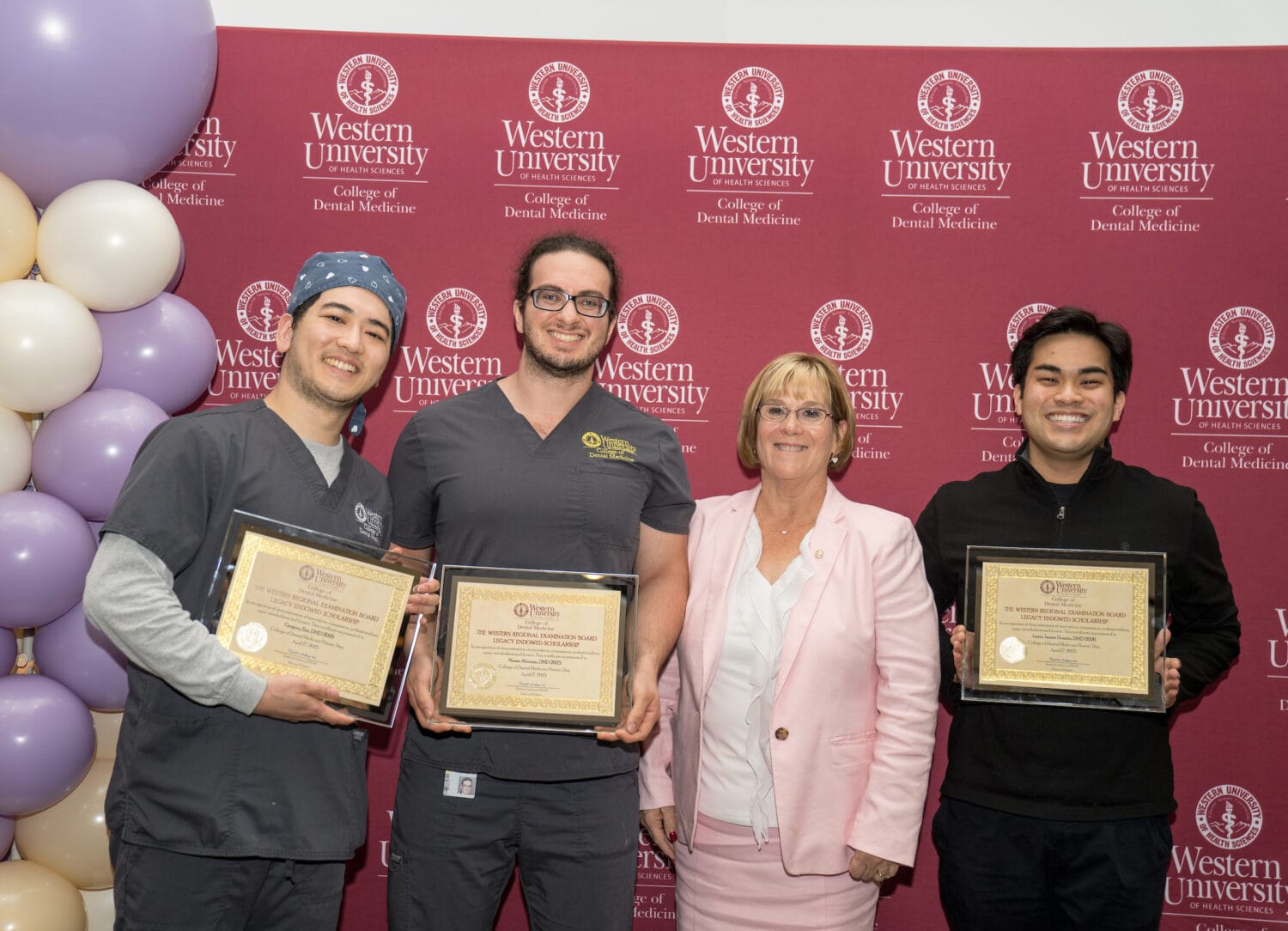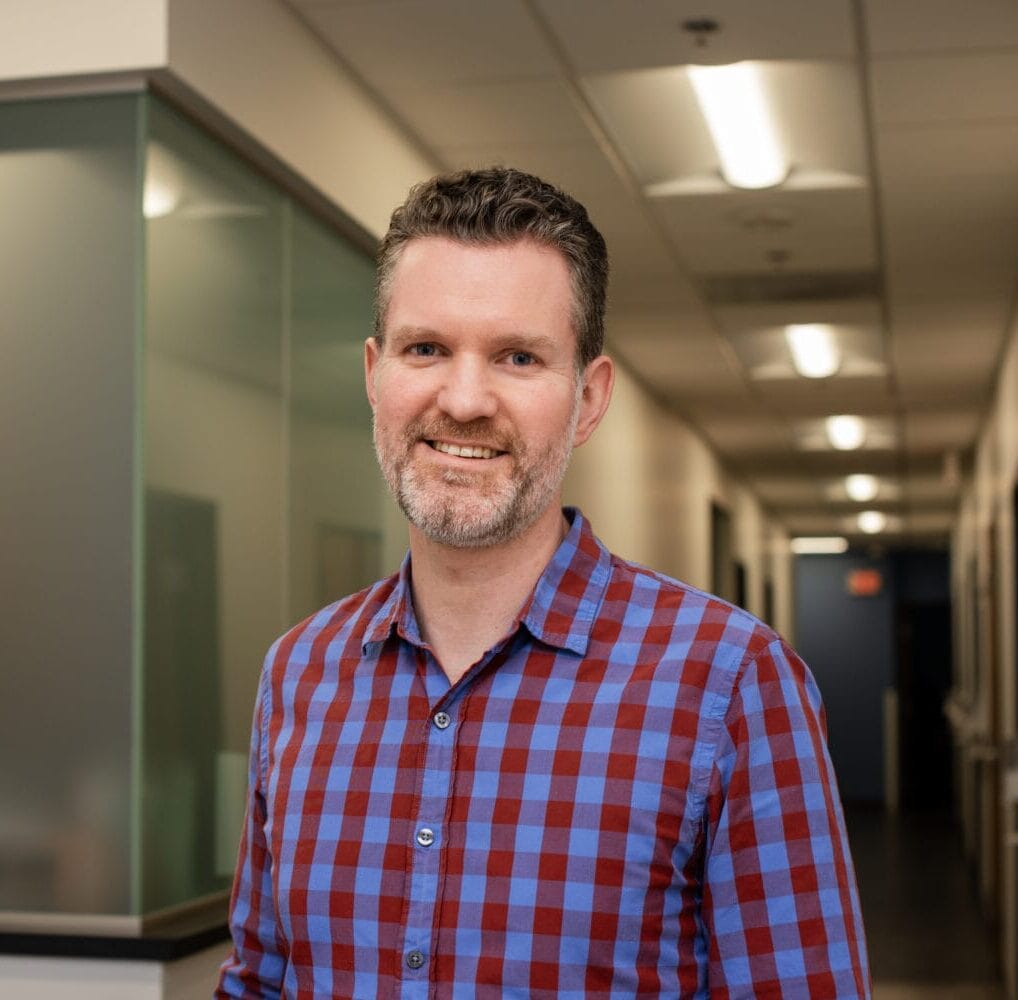Webb: Disruption, patient experience are keys to health care’s future

Future health care professionals and educators, including students and faculty at Western University of Health Sciences, should embrace disruptive innovation and rapid technological advances to improve patient experiences, revamp the health care system and, ultimately, improve health across the country and around the world.
That was the advice offered by futurist, inventor, health care entrepreneur and author Nicholas Webb during the ninth annual Philip Pumerantz Distinguished Lecture, held Thursday, September 7, 2017 in the Health Education Center at WesternU.
Speaking to an overflow crowd that filled more than 700 seats in two lecture halls, as well as another smaller classroom, Webb – director of the University’s Center for Innovation, which had its official launch the day prior – said the key to surviving and thriving amidst changes in health care is understanding its ever-shifting environment, and positioning oneself accordingly. Likening modern health care to banking – which “used to be place we’d go, but now is a thing we do” – Webb said patients see health care as a fluid, consumable product that is not only clinical delivery, but experiential engagement, often virtual. He expects that 50 percent of “clinical” visits will be digital in the near future, as the health professions take advantage of wearable technology to constantly monitor patients and intercede before problems develop, rather than when symptoms appear.
“I think we will ultimately move from diagnosis and treatment to anticipation and prevention,” Webb said, with “anticipatory” health care mitigating the need for patients to consume high levels of expensive care.
Key to this brave new world of digital diagnosis and treatment is disruptive innovation, the notion that slow, incremental adjustments cannot yield the kind of change necessary to make the health care system better. “I’ve been in health care for 35 years, and we’ve had incremental changes for the longest time,” Webb said. “But incremental is out; disruption is in. Innovators are not trying to improve health care – they’re trying to destroy it” by rethinking how care is delivered through innovative technology.
Such change, Webb believes, will ultimately move the country to a single-payer model for health care, “but as the government giveth, the government taketh away. And what they’re going to take away is our ability not to be monitored. If you want free health care, you will be continuously monitored,” he said. Connective technology will allow for continuous insights “so we can intervene using new, innovative, beautiful and comfortable technologies,” and constantly understand people’s current state of health so that intervention can take place when needed.
Technological advances will include, but surely will not be limited to, a decentralization of diagnosis that allows for one-on-one digital diagnosis dialogues between patient and multiple providers; refrigerator-sized drug processing units that can create prescriptions for pennies; portable ultrasound units that can be plugged into smart phones; virtual reality and augmented reality tools for enhanced diagnoses; 3-D printers capable of creating a wide array of devices, including prosthetics; and a host of other innovations either on the market or in the development pipeline.
Disruptively innovating health care, and shifting its core functions away from treatment and toward prevention and wellness, is essential if it is to survive as a public service and a public good, Webb said. “The problem is that we can’t afford the health care we have. We spend more money than any industrialized country in the world, and we have by far the sickest population. So when we think about the national dialogue — ‘we demand more health care’ — what we really should be demanding is more health.”
Technological advancements are but one half of this successful disruption, he continued. The second half centers on patient experience design – analyzing the ecosystem of health care to improve the human experience and people’s interaction with care services. Such analysis starts with the basics: Webb cited a study showing that “if you make a patient wait less than 15 minutes, they really like you. If you make them wait more than 15 minutes, they totally hate you. They’re judging you on the experience you deliver, not on your clinical skill.”
Webb, who has worked with a variety of health care companies, said the best brands and caregivers always do three things: Be thoughtful about each and every touch point across the patient experience; thoroughly identify patients by cross-checking across patient types; and deliver patient experiences through two platforms: physical human contact and digital platforms.
Successful patient experience design depends on understanding the patient persona and not making assumptions, he added. “If we want to deliver beautiful human experiences, if we really want to create these superstar practices, we have to get to the point where we look at people based on their unique and beautiful differences, and deliver incredible experiences to them.”
He closed with four guiding thoughts for those ready to disruptively innovate on behalf of the health professions: rethink, reinvent, reposition, and ultimately, jump in. “Dive in and actually make the commitment to be disruptive innovators and drive this incredible change.”



